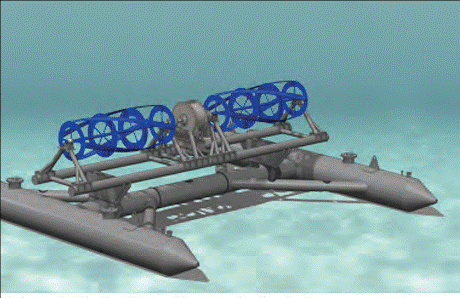

Clearly, increased use of renewable energy will be a prerequisite for future sustainability, which is a core objective for smart cities. With this thought in mind, something recently caught my attention in an article in the Ideas section of the Boston Sunday Globe newspaper. The article, entitled “Boston vs. the Rising Tide,” discussed how, back in colonial days, the effects of ocean tide were once extremely apparent in this city by the sea. And based on the tidal-influenced flooding of downtown during a particularly severe storm this past winter – tides are becoming increasingly apparent once again. This is due in part to the gradually rising sea levels and severe weather patterns we’ve been experiencing courtesy of global warming.
Those familiar with the city’s history, know that Boston was originally built on a relatively small peninsula surrounded by tidal mud flats. These mud flats, which frequently became rancid smelling at low tides, were later filled in to create the Back Bay and other neighborhoods. Back in colonial days, several tide mills were built to grind grain by harnessing the power created by the daily ebb and flow of the ocean tides. Obviously, these became irrelevant with the advent of plentiful, and relatively cheap electricity. However, as mentioned briefly in that newspaper article, “There’s been at least one proposal for Boston to revisit tidal power.” This would take the form of a hydroelectric canal that would generate hydroelectric power for the local neighborhood by stopping tidal water with a dam and releasing it through turbines along the canal. The proponent of that idea, a local architect named Paul Lukez, envisions “a neighborhood combining tidal, wind, and solar power to be self-sufficient.”
While this proposal appeared to be pretty far-fetched to me, my curiosity prompted me to do some informal research on tidal power.
I learned that, while not nearly as well-proven as renewable hydro-electric power from dams (which supplies a significant percentage of the world’s baseload electricity), tidal power is generally more reliable and predictable than either wind or solar (while wind and sunshine can both be fickle, the ocean tides tend not to be…). In some cases, tidal power generation can also avoid some of the aesthetic drawbacks from solar and wind, which often block those renewable energy projects from getting off the ground.
On the negative side, addition to being highly location-dependent, tidal power generation is largely unproven, relatively expensive to implement, and prone to saltwater corrosion. As with both utility-scale solar and wind projects, tidal projects also require a connection back to the grid to be practical, and – due to the often-remote locations – this is not always practical. (Of course, for smart city applications, connecting a tidal project to the grid should be a no-brainer…).
Tidal power is not new; the first tidal mills date back to 787 AD and a mill built in the twelfth century in Suffolk England stills stands today. Initially, tidal power was used to mill grain. Then, in the 1920s, an engineer named Dexter Cooper got the idea to take advantage of the significant tidal range (18-foot average) of Passamaquoddy Bay in Canada and the adjacent Cobsook Bay in Maine to generate electricity. Despite some government funding to research its feasibility and preliminary FERC approvals, this project never fully got off the ground. Initially, this was largely due to the problem of connecting this potentially significant generation source to the electrical grid and, more recently, due to an inability to justify economically.
While tidal electric generation remains largely hypothetical today, it has been implemented on commercial scales in France, Canada, the US, China, and Korea. Completed in 1967 following many years of research and six years of construction, EDF’s 240 MW La Rance Barrage in France became the world’s first commercial-scale tidal electric generation project.
While tidal generation can be accomplished in a relatively non-intrusive manner by suspending a turbine generator within a natural tidal flow of at least five knots (see illustration), the La Rance project involved constructing both a huge barrage structure to create a reservoir, and a 330-meter long dam to house the generating turbines. According to the Aquatic Renewable Energy Technologies website, the plant uses 24 EDF-designed 10-megawatt low-head bulb-type turbine generator sets and generates an average 600 million kWh of electricity per year. However, while the La Rance project proves the general feasibility of the tidal electric generation concept, its scale and relative remoteness make it is a far cry from what could be implemented within the concept of a smart city.
The only current reference to an urban project that I could find was for the 1.1-MW Roosevelt Island Project in New York City. This received a commercial pilot project license from FERC in 2012 and, while the demonstration project appears to have been successful, as far as I can tell, it is no longer active. FERC has also issued preliminary licenses for another project on the Maine coast and – closer to home for us here at ARC in Dedham, Massachusetts – for a state-funded tidal generating research project on the Cape Cod Canal in Bourne.
So, the bottom line appears to be that while tidal generation offers significant future potential for non-carbon-producing electric generation on both the commercial grid and smart city scales, the emphasis here is on “potential,” and – as the saying goes, “much work remains to be done.”


